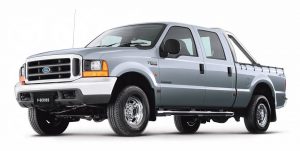Recalls: Ford Super Duty utility
Overview
Manufacturers, or importers, issue recalls for defects or faults which have the potential to cause injury. Generally, manufacturers will inform the original buyers if their vehicle is subject to a recall and of the steps required to remedy the defect or fault. Please note that the recalls below (if any) are for Australian-delivered vehicles only. Furthermore, the number of recalls should not be taken as an indication of a model’s reliability or its safety more generally.
Recalls: Ford Super Duty utility
No recall information is available for the Ford Super Duty utility. To search for recalls of Ford models, please visit Product Safety Recalls Australia: Ford.
Problems and faults: Ford Super Duty utility
Overview
This section identifies potential problems, causes and fixes based on the experiences of owners and repairers, online sources and technical service bulletins. This information is provided solely for reference purposes and AustralianCar.Reviews recommends that only properly qualified persons carry out repairs or modifications. Furthermore, the number of items below should not be taken as an indicator of a model’s reliability or the frequency with which they may occur.
To report a problem or fault to the AustralianCar.Reviews team, please use the Contact Us form. Note that AustralianCar.Reviews does not offer advice on automotive problems or disputes; such enquiries will not receive a reply. For vehicles purchased from dealers after 1 January 2011, please see our Australian Consumer Law fact sheet.
Problems and faults: Ford Super Duty utility
- Worn lower ball joints could cause stiff steering and poor steering wheel return – a replacement ball joint, with a grease fitting, should be fitted and regularly lubricated.
- Spark plug hole threads – within the cylinder heads are easily damaged – or stripped when the plugs are removed due to carbon build-up.
- For models with diesel engines that are used for heavy towing, the 4R100 automatic transmission is susceptible to accelerated wear and could fail in as little as 90,000 kilometres. Symptoms of wear include shuddering under light throttle inputs, delayed upshifts and burnt or dark transmission fluid. If used for heavy towing, it is recommended that a larger transmission cooler be fitted and that the transmission fluid is changed at least annually.
- For early V8 engines, the two-piece spark plugs could seize in the heads and have to be extracted with special tools. Misfires should therefore be investigated and it is recommended that the spark plugs be changed every 60,000 kilometres.
- Heater core failures have been reported and may require additional electrical earthing and a restrictor in the heater inlet hose.
- Collapsed bottom radiator hoses and failed thermostats have been reported to cause overheating. Overheating may also be caused by the thermo-fan not working.
- Water can enter the cabin around cable grommets and through poorly fitted windscreen rubbers – these can affect electrical components and lead to dampness and mildew.




